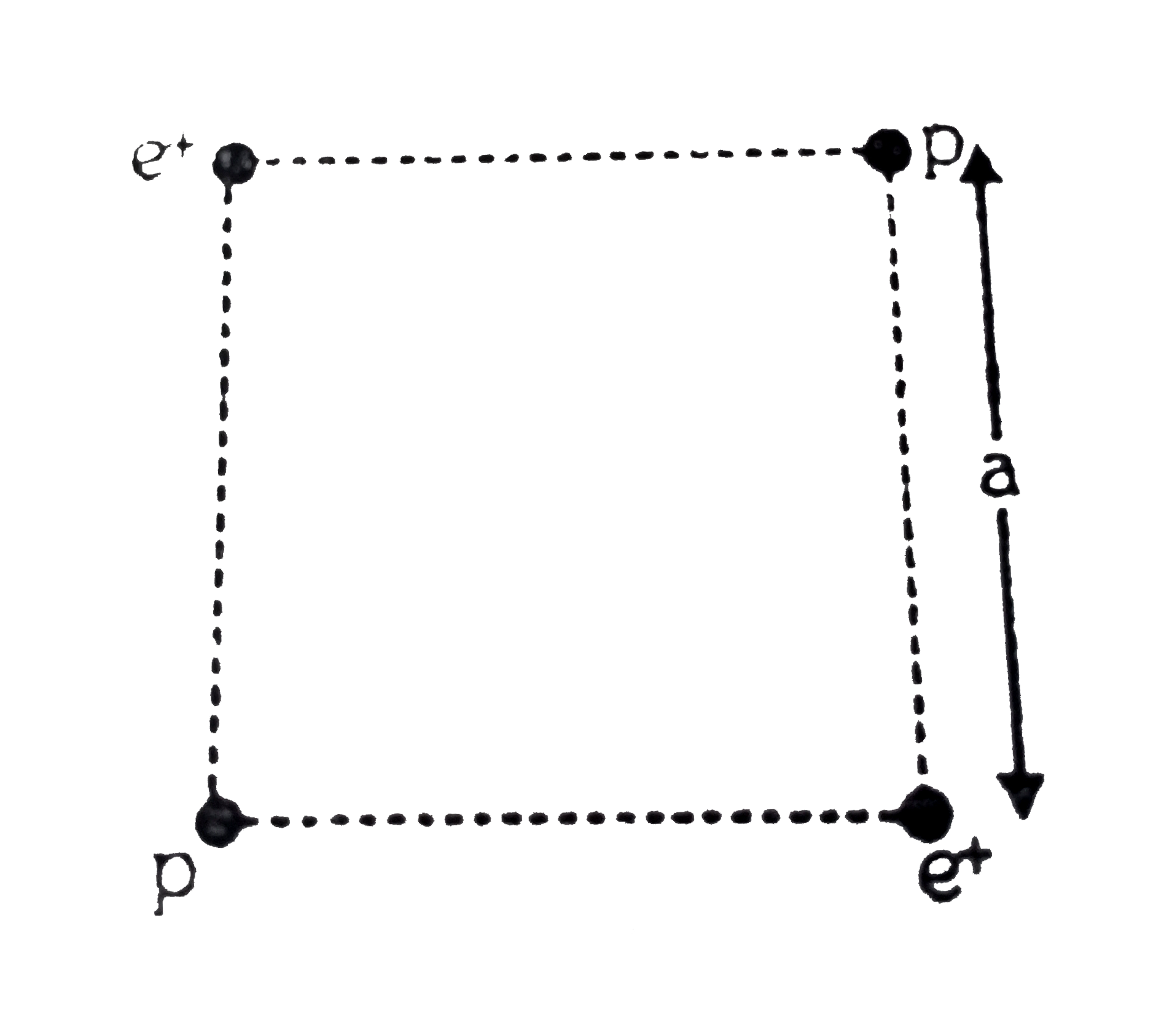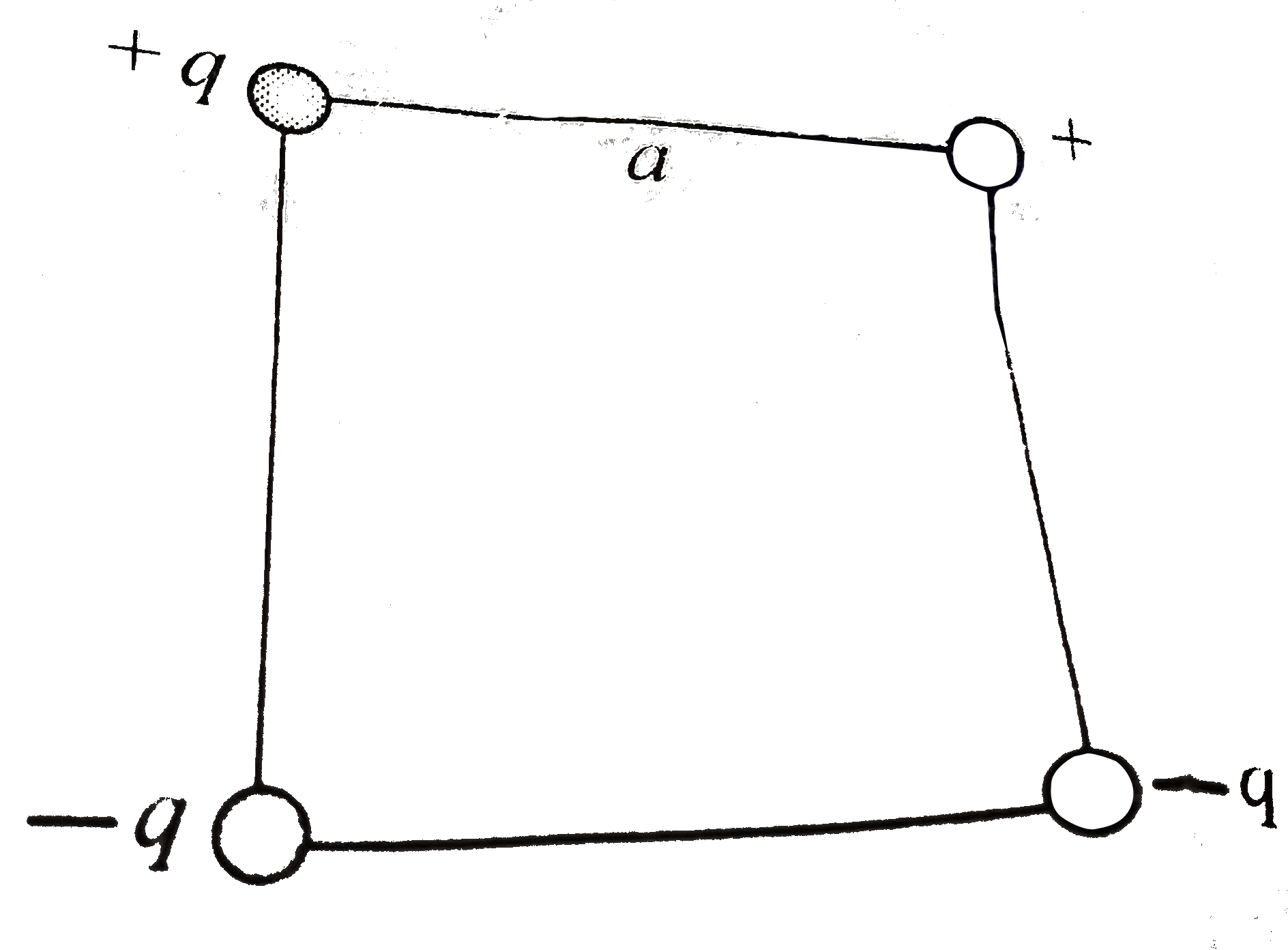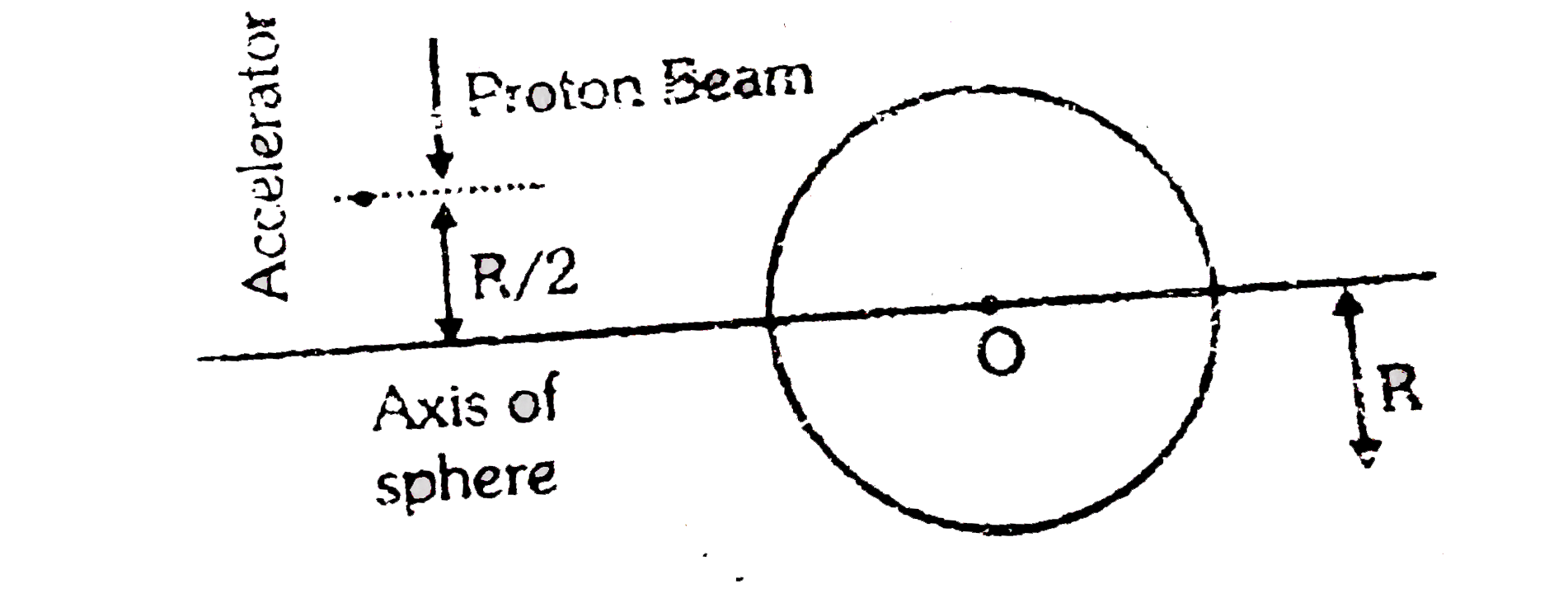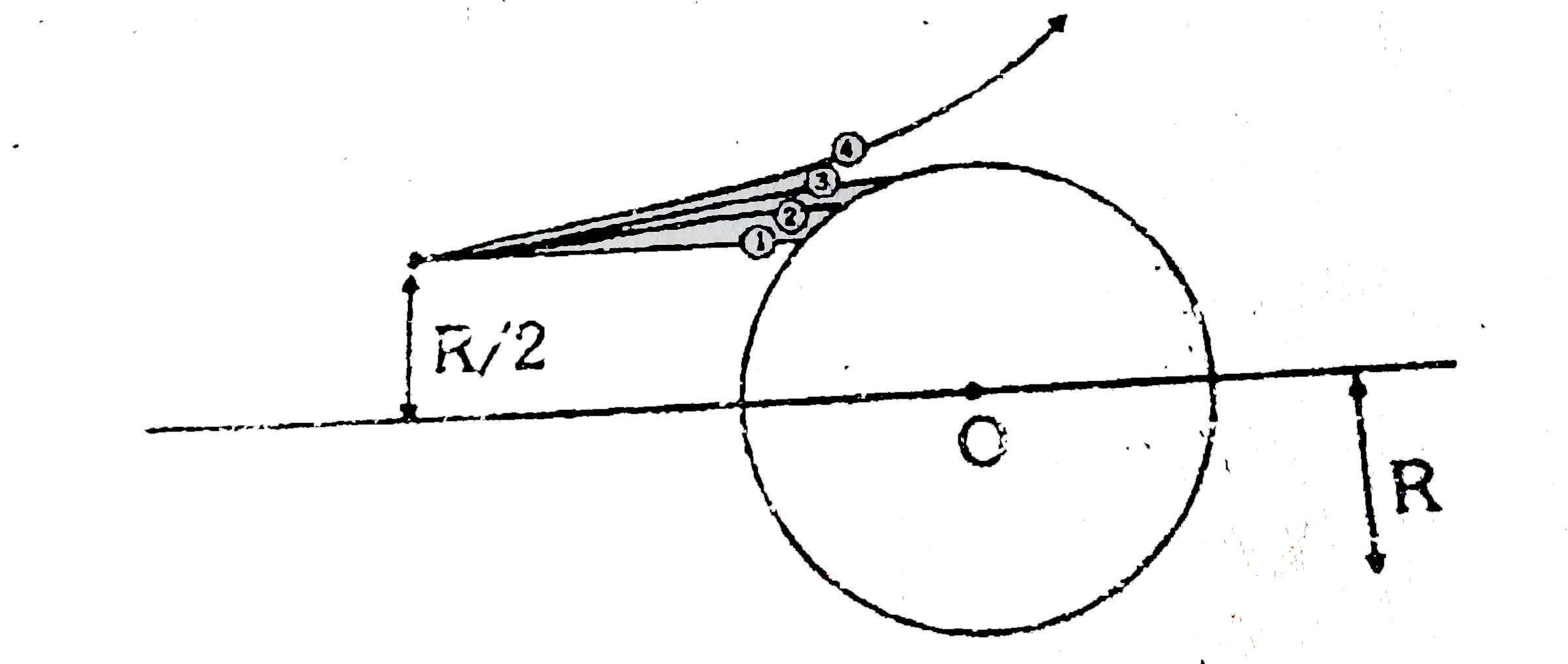Two positrons (e+) and two protons (p) are kept on four corners of a square of side a as shown in figure. The mass of proton is much larger than the mass of positron. Let q denotes the charge on the proton as well as the position then the kinetic energies of one of the positrons and one of the protons respectively after a very long time will be-

The correct Answer is:D
As mass of proton >>> mass of position so initial accelaration of position is much larger than proton. Therefore position reach far away in very short time as compare to proton.

2Ke+=(4kq2a+2kq2a√2)−kq2a√2⇒Ke+=q22π∈0a(1+14√2) and 2Kp=kq2a√2−0⇒Kp=q28√2π∈0a
Topper's Solved these Questions
- MISCELLANEOUSBook:ALLENChapter:MISCELLANEOUSExercise:Part -II Example Some worked out Examples
Explore 1 Video
- MISCELLANEOUSBook:ALLENChapter:MISCELLANEOUSExercise:Exercise-01
Explore 87 Videos
- MISCELLANEOUSBook:ALLENChapter:MISCELLANEOUSExercise:Question
Explore 1 Video
- KINEMATICS (MOTION ALONG A STRAIGHT LINE AND MOTION IN A PLANE)Book:ALLENChapter:KINEMATICS (MOTION ALONG A STRAIGHT LINE AND MOTION IN A PLANE)Exercise:BEGINNER S BOX-7
Explore 8 Videos
- PHYSICAL WORLD, UNITS AND DIMENSIONS & ERRORS IN MEASUREMENT Book:ALLENChapter:PHYSICAL WORLD, UNITS AND DIMENSIONS & ERRORS IN MEASUREMENT Exercise:EXERCISE-IV
Explore 8 Videos
Similar Questions
Four equal electric charges are arranged at the four corners of a square of side 'a'. Out of these four charges, two charges are positive and placed at the ends of one diagonal. The other two charges are positive and placed at the ends of the other diagonal. The energy of the system in
View SolutionA particle which is four times in mass and two times in charge that of proton is called
View Solution
Knowledge Check
A proton is kept at rest. A positively charged particle is released from rest at a distance d in its field. Consider two experiments, one ini which the charged particle is also a proton and in another, a position. In the same time t, the work done on the two moving charged particles is
Asame as the same force law is involved in the two experiments.Bless for the case of a positron, as the positron moves away more rapidly and the force on it weakens.Cmore for the case of a positron, as the positron moves away a larger distance.Dsame as the work done by charged particle on the stationary proton.An electron and a proton are detected in a cosmic ray experiment, the first with kinetic energy 10 keV, and the second with 100 keV. The ratio of their speeds is
(where me and mp are masses of electron and proton respectively)A√110mempB√110mpmeC110mempD110mpme
Four charges are placed at four corners of a square as shown in figure. The side of the square is a. Two charges are positive and two are negative, but their magnitudes are the same. Now, an external agent starts decreasing all the sides of the square slowly and at the same rate. What happens to the electrical potential energy of the system and what will be the nature of work done by the agent?

View SolutionA proton (mass m and charge +e) and an α-particle (mass 4 m and charge +2e) are projected with the same kinetic energy at right angles to the uniform magnetic field. Which one of the following statements will be true?
View SolutionA proton is kept at rest. A positively charged particle is released from rest at a distance d in its field. Consider two experiments, one ini which the charged particle is also a proton and in another, a position. In the same time t, the work done on the two moving charged particles is
View SolutionTwo positive charges of magnitude q are placed at the ends of a side ( side 1) of a square of side 2a . Two negative charges of the same magnitude are kept at the other corners . Staring from rest , a charge Q moves from the middle of side 1 to the centre of square , its kinetic energy at the centre of square is -.
View SolutionAn accelration produces a narrow beam of protons, each having an initial speed of v0. The beam is directed towards an initially uncharges distant metal sphere of radius R and centered at point O. The initial path of the beam is parallel to the axis of the sphere at a distance of (R/2) from the axis, as indicated in the diagram.

The protons in the beam that collide with the sphere will cause it to becomes charged. The subsequentpotential field at the accelerator due to the sphere can be neglected. The angular momentum of a particle is defined in a similar way to the moment of a force. It is defined as the moment of its linear momentum, linear replacing the force. We may assume the angular momentum of a proton about point O to be conserved. Assume the mass of the proton as mP and the charge on it as e. Given that the potential of the sphere increases with time and eventually reaches a constant velue.
After a long time, when the potential of the sphere reaches a constant value, the trajectory of proton is correctly sketched as

View SolutionA proton is kept at rest. A positively charged particle is released from rest at a distance d in its field. Consider two experiments, one in which the charged particle is also a proton and in another, a positron. In the same time t, the work done on the two moving charged particles is
View Solution
